Lenovo Yoga Slim 7i (14, Gen 9) review – OLED on the Go
 When it comes to small and powerful machines, Lenovo and its well-known Yoga lineup provide a large number of devices of various sizes. If you are on the hunt for something powerful and light, the Yoga Slim 7i (14″, Gen 9) could impress you with its snappy performance thanks to the 28W Intel Meteor Lake CPUs. Considering the size of this notebook, the lack of dGPUs isn’t unusual. However, the integrated Intel Arc (8-Cores) or Arc (7-Cores) has enough power for playing light games with a high FPS.
When it comes to small and powerful machines, Lenovo and its well-known Yoga lineup provide a large number of devices of various sizes. If you are on the hunt for something powerful and light, the Yoga Slim 7i (14″, Gen 9) could impress you with its snappy performance thanks to the 28W Intel Meteor Lake CPUs. Considering the size of this notebook, the lack of dGPUs isn’t unusual. However, the integrated Intel Arc (8-Cores) or Arc (7-Cores) has enough power for playing light games with a high FPS.
The machine has a 65Wh battery that supports Rapid Charge. If you are often on the go and you value battery life more than anything, look for a notebook with Intel Evo certification (option) which boosts the autonomous life with its additional optimizations. The upgradability here is poor but that’s normal for such a device. The port selection is modern with two USB4 connectors and HDMI 2.1.
There are two 1200p 60Hz OLED display variants with Dolby Vision and HDR support – one of them is a touchscreen with a glass cover. We bought a laptop with the non-touch model and actually, we are pretty impressed by its color coverage. Most of the goodies are available for all laptops of this series and this includes extras such as an IR Web camera, a backlit keyboard, a quad-speaker audio setup optimized with Dolby Atmos, and Wi-Fi 6E + Bluetooth 5.3 for connectivity.
You can check the prices and configurations in our Specs System: https://laptopmedia.com/series/lenovo-yoga-slim-7i-14-gen-9/
Contents
Specs, Drivers, What’s in the box
- Display
- 14.0”, WUXGA (1920 x 1200), OLED
- HDD/SSD
- up to 1000GB SSD
- M.2 Slot
- 1x 2242 / 2280 PCIe NVMe 4.0 x4 See photo
- RAM
- up to 32GB
- OS
- Windows 11 Home, Windows 11 Pro
- Battery
- 65Wh
- Body material
- Aluminum
- Dimensions
- 312 x 221 x 14.9 mm (12.28" x 8.70" x 0.59")
- Weight
- 1.39 kg (3.1 lbs)
- Ports and connectivity
- 1x USB Type-A
- 3.2 Gen 1 (5 Gbps), Sleep and Charge
- 2x USB Type-C
- 4.0, Thunderbolt 4, Power Delivery (PD), DisplayPort
- HDMI
- 2.1 (4K@60Hz)
- Card reader
- Ethernet LAN
- Wi-Fi
- 802.11ax
- Bluetooth
- 5.3
- Audio jack
- 3.5mm Combo Jack
- Features
- Fingerprint reader
- Web camera
- FHD IR with E-shutter, fixed focus, with ToF sensor
- Backlit keyboard
- Microphone
- Quad-microphone array
- Speakers
- 4x 2W Stereo Speakers, Dolby Atmos, Smart Amplifier (AMP)
- Optical drive
- Security Lock slot
All Lenovo Yoga Slim 7i (14″, Gen 9) configurations
Drivers
All drivers and utilities for this notebook can be found here: https://pcsupport.lenovo.com/us/en/products/laptops-and-netbooks/yoga-series/yoga-slim-7-14imh9/downloads
What’s in the box?
Inside the box, you’ll find a bit of paperwork and a 65W USB Type-C charger.
Design and construction
The Lenovo Yoga Slim 7i (14″, Gen 9) looks stunning in a Luna grey color. The design is clean and it’s suitable for all kinds of work environments such as offices, schools, etc. The aluminum build is stable – the lid can be slightly flexed when it’s opened and you can bend the base a bit in the area below the Space key. After a day of usage, there are almost no visible fingerprints on the matte finish of the device.
The lid can be opened with a single hand. This laptop is thin with a profile thickness of just 14.9 mm. The touchscreen iterations are slightly heavier (1.43 kilos) than their non-touch siblings (1.39 kg).
The OLED display is surrounded by narrow bezels. The upper one has a protrusion on the top that houses a 1080p IR Web camera for Windows Hello that has Hall and ToF sensors. The E-shutter switch is positioned on the right side of the laptop.
The max angle of opening is big and it’s close to the 180-degree mark.
The two tall speaker grills are placed on the sides of the backlight keyboard with a dedicated Copilot shortcut. The board is comfortable for typing – the key travel is impressively long for such a thin chassis and the feedback is presently clicky. The small “Up” and “Down” Arrow keys are hard to press. The touchpad with a Mylar surface is big. smooth, and accurate, but its clicks could be a bit more quiet.
The bottom panel looks standard – the three rubber feet, a ventilation grill, and two speaker cutouts are placed on it. The heat is guided via a pair of vents on the rear. Some amount of hot air makes its way to the display during heavy CPU stress.
Ports
On the left, there is an HDMI 2.1 for up to 4K@60Hz external displays and two 40 Gbps Thunderbolt 4 / USB4 ports with PowerDelivery 3.1 and DisplayPort 1.4 functionality. On the right, you get a USB Type-A 3.2 (Gen. 1) port with an Always On function, an Audio combo jack, a Power button, and an E-shutter switch.
Display and Sound Quality, Get our Profiles
Lenovo Yoga Slim 7i (14″, Gen 9) is equipped with an OLED panel, model number LEN140WUXGA (LEN88AC). It comes with a 60Hz refresh rate and 10-bit color support (10-bit color depth). Its diagonal is 14″ (35.6 cm), and the resolution – 1920 x 1200p. Additionally, the screen ratio is 16:10, the pixel density – 162 ppi, and their pitch – 0.16 x 0.16 mm. The screen can be considered Retina when viewed from at least 53 cm (this is based on the pixel density and the typical viewing distance at which individual pixels cannot be distinguished by the human eye).
Viewing angles are good. We offer images at different angles to evaluate the quality.
Also, a video with locked focus and exposure.
On a black background, white fill at 10% of the screen area, the maximum measured brightness in HDR On mode is 627 nits (cd/m2) in the middle of the screen, and 604 nits (cd/m2) in a full white screen. The maximum measured brightness in HDR Off mode is 388 nits (cd/m2) in the middle of the screen and 382 nits (cd/m2) average across the surface with a maximum deviation of 4%. The Correlated Color Temperature on a white screen and at maximum brightness is 6350K.
In the illustration below you can see how the display performs from a uniformity perspective. The illustration below shows how matters are for operational brightness levels (approximately 140 nits). Values of dE2000 over 4.0 should not occur, and this parameter is one of the first you should check if you intend to use the laptop for color-sensitive work (a maximum tolerance of 2.0 ). The contrast ratio of OLED panels is practically infinite, due to their ability to turn off black pixels entirely.
To make sure we are on the same page, we would like to give you a little introduction to the sRGB color gamut and the Adobe RGB. To start, there’s the CIE 1976 Uniform Chromaticity Diagram that represents the visible specter of colors by the human eye, giving you a better perception of the color gamut coverage and the color accuracy.
Inside the black triangle, you will see the standard color gamut (sRGB) that is being used by millions of people on HDTV and on the web. As for the Adobe RGB, this is used in professional cameras, monitors, etc for printing. Basically, colors inside the black triangle are used by everyone and this is the essential part of the color quality and color accuracy of a mainstream notebook.
Still, we’ve included other color spaces like the famous DCI-P3 standard used by movie studios, as well as the digital UHD Rec.2020 standard. Rec.2020, however, is still a thing of the future and it’s difficult for today’s displays to cover that well. We’ve also included the so-called Michael Pointer gamut, or Pointer’s gamut, which represents the colors that naturally occur around us every day.
The yellow dotted line shows Lenovo Yoga Slim 7i (14″, Gen 9)’s color gamut coverage.
Its display covers 100% of the sRGB/ITU-R BT.709 (web/HDTV standard) in CIE1976, and 100% of DCI-P3, ensuring a super vibrant and attractive picture.
We tested the accuracy of the display with 24 commonly used colors like light and dark human skin, blue sky, green grass, orange, etc.
Below you can compare the scores of the Lenovo Yoga Slim 7i (14″, Gen 9) with the default settings compared to the Display P3 color space.
The next figure shows how well the display is able to reproduce really dark parts of an image, which is essential when watching movies or playing games in low ambient light (HDR Off).
The left side of the image represents the display with stock settings, while the right one is with the “Gaming and Web Design” profile activated. On the horizontal axis, you will find the grayscale, and on the vertical axis – the luminance of the display. On the two graphs below you can easily check for yourself how your display handles the darkest nuances but keep in mind that this also depends on the settings of your current display, the calibration, the viewing angle, and the surrounding light conditions.
Health Impact: PWM (Screen flickering)
Pulse-width modulation (PWM) is an easy way to control monitor brightness. When you lower the brightness, the light intensity of the display is not lowered, but instead turned off and on by the electronics with a frequency indistinguishable to the human eye. In these light impulses, the light/no-light time ratio varies, while brightness remains unchanged, which is harmful to your eyes. You can read more about that in our dedicated article on PWM.
Lenovo Yoga Slim 7i (14″, Gen 9)’s display pulses with a not-so-high amplitude above 50% of brightness (with a 485 Hz frequency). This makes it relatively comfortable to use in this aspect.
Health Impact: Blue light emissions
Installing our Health-Guard profile not only eliminates PWM but also reduces the harmful Blue Light emissions while keeping the colors of the screen perceptually accurate. If you’re not familiar with the Blue light, the TL;DR version is – emissions that negatively affect your eyes, skin, and your whole body. You can find more information about that in our dedicated article on Blue Light.
Health Impact: Gloss-level measurement
Glossy-coated displays are sometimes inconvenient in high ambient light conditions. We show the level of reflection on the screen for the respective laptop when the display is turned off and the measurement angle is 60° (in this case, the result is 169 GU).
Sound
Lenovo Yoga Slim 7i (14″, Gen 9)’s Dolby Atmos speakers produce a sound of very good quality. Its low, mid, and high tones are clear of deviations.
Buy our profiles
Since our profiles are tailored for each individual display model, this article and its respective profile package are meant for Lenovo Yoga Slim 7i (14″, Gen 9) configurations with 14.0″ LEN140WUXGA (LEN88AC) (1920 x 1800) OLED.
*Should you have problems with downloading the purchased file, try using a different browser to open the link you’ll receive via e-mail. If the download target is a .php file instead of an archive, change the file extension to .zip or contact us at [email protected].
Read more about the profiles HERE.
In addition to receiving efficient and health-friendly profiles, by buying LaptopMedia's products you also support the development of our labs, where we test devices in order to produce the most objective reviews possible.

Office Work
Office Work should be used mostly by users who spend most of the time looking at pieces of text, tables or just surfing. This profile aims to deliver better distinctness and clarity by keeping a flat gamma curve (2.20), native color temperature and perceptually accurate colors.

Design and Gaming
This profile is aimed at designers who work with colors professionally, and for games and movies as well. Design and Gaming takes display panels to their limits, making them as accurate as possible in the sRGB IEC61966-2-1 standard for Web and HDTV, at white point D65.

Health-Guard
Health-Guard eliminates the harmful Pulse-Width Modulation (PWM) and reduces the negative Blue Light which affects our eyes and body. Since it’s custom tailored for every panel, it manages to keep the colors perceptually accurate. Health-Guard simulates paper so the pressure on the eyes is greatly reduced.
Get all 3 profiles with 33% discount
Performance: CPU, GPU, Storage
All benchmarks and tests were conducted with the “Best performance” preset applied in the Windows “Power & Battery” menu. Also, the “Performance” preset is selected in the Lenovo Vantage app.
CPU options
This device is offered with Intel Core Ultra 5 125H or Intel Core Ultra 7 155H.
The laptop that we bought has a Core Ultra 7 155H.
Results are from the Cinebench R23 CPU test (the higher the score, the better)
Results are from our Photoshop benchmark test (the lower the score, the better)
GPU options
All devices of this Lenovo series are iGPU-only machines. This means you can rely on the Intel Arc (7-Cores) or Intel Arc (8-Cores).
Our notebook is equipped with an 8-core integrated graphics card.
Results are from the 3DMark: Time Spy (Graphics) benchmark (higher the score, the better)
Results are from the 3DMark: Fire Strike (Graphics) benchmark (higher the score, the better)
Results are from the Unigine Superposition benchmark (higher the score, the better)
Gaming tests


| CS:GO | HD 1080p, Low (Check settings) | HD 1080p, Medium (Check settings) | HD 1080p, MAX (Check settings) |
|---|---|---|---|
| Average FPS | 310 fps | 223 fps | 122 fps |

| DOTA 2 | HD 1080p, Low (Check settings) | HD 1080p, Normal (Check settings) | HD 1080p, High (Check settings) |
|---|---|---|---|
| Average FPS | 90 fps | 79 fps | 74 fps |
Storage performance
Our notebook has a 1TB SKHynix HFS001TEJ4X112N. This Gen 4 NVMe gets hot during benchmarking – 80°C.
[eBook Guide + Tools] How to MAX OUT Your Laptop
You can make your laptop Faster. LaptopMedia has tested thousands of models in the last 15 years, and we have yet to see a notebook that couldn't be made more powerful through modifications.
That's why we decided to bundle everything we know about how to achieve this in an Easy-to-Follow, Step-by-Step, and Laboratory-Tested, all in one project.
Read more about it here:
[eBook Guide + Tools] How to MAX OUT Your Laptop

🛠️ GPU Modifications: vBIOS, Overclocking, Undervolting
⚙️ Building Fast/Reliable RAID configuration
💻 Hardware upgrade tips for best results
🖼 Display enhancing
💾 OS Optimization for best performance
Temperatures and comfort, Battery Life
Max CPU load
In this test we use 100% on the CPU cores, monitoring their frequencies and chip temperature. The first column shows a computer’s reaction to a short load (2-10 seconds), the second column simulates a serious task (between 15 and 30 seconds), and the third column is a good indicator of how good the laptop is for long loads such as video rendering.
Average P-core frequency; Average E-core frequency; Average LP E-core frequency; CPU temp.; Package Power
| Intel Core Ultra 7 155H (28W Base Power) | 0:02 – 0:10 sec | 0:15 – 0:30 sec | 10:00 – 15:00 min |
|---|---|---|---|
| Lenovo Yoga Slim 7i (14″, Gen 9) | 2.41 GHz @ 2.07 GHz @ 1.40 GHz @ 70°C @ 47W | 2.34 GHz @ 2.02 GHz @ 1.40 GHz @ 83°C @ 47W | 2.00 GHz @ 1.59 GHz @ 1.10 GHz @ 78°C @ 35W |
| Dell Inspiron 16 Plus 7640 | 3.50 GHz @ 2.70 GHz @ 1.90 GHz @ 80°C @ 80W | 2.82 GHz @ 2.65 GHz @ 2.42 GHz @ 99°C @ 77W | 2.74 GHz @ 2.28 GHz @ 1.69 GHz @ 90°C @ 55W |
| Dell Inspiron 14 Plus 7440 | 3.22 GHz @ 2.62 GHz @ 1.74 GHz @ 89°C @ 80W | 2.64 GHz @ 2.61 GHz @ 2.49 GHz @ 100°C @ 73W | 2.50 GHz @ 1.99 GHz @ 1.40 GHz @ 83°C @ 45W |
| HP OMEN Transcend 14 (14-fb0000) | 3.38 GHz @ 2.65 GHz @ 2.29 GHz @ 65°C @ 85W | 3.22 GHz @ 2.67 GHz @ 2.43 GHz @ 73°C @ 80W | 2.87 GHz @ 2.45 GHz @ 1.68 GHz @ 76°C @ 61W |
| Dell XPS 16 9640 | 3.58 GHz @ 2.72 GHz @ 2.27 GHz @ 86°C @ 97W | 3.39 GHz @ 2.73 GHz @ 1.92 GHz @ 90°C @ 80W | 3.02 GHz @ 2.37 GHz @ 1.70 GHz @ 84°C @ 60W |
| Dell XPS 14 9440 | 3.01 GHz @ 2.55 GHz @ 1.81 GHz @ 88°C @ 64W | 1.96 GHz @ 2.53 GHz @ 2.22 GHz @ 96°C @ 58W | 2.17 GHz @ 1.88 GHz @ 1.33 GHz @ 83°C @ 38W |
| Dell XPS 13 9340 | 2.26 GHz @ 2.43 GHz @ 2.19 GHz @ 100°C @ 59W | 1.21 GHz @ 1.34 GHz @ 2.48 GHz @ 96°C @ 38W | 1.52 GHz @ 1.25 GHz @ 1.67 GHz @ 96°C @ 32W |
| HP Spectre x360 16 (16-aa0000) | 3.02 GHz @ 2.41 GHz @ 1.70 GHz @ 72°C @ 64W | 2.93 GHz @ 2.41 GHz @ 1.93 GHz @ 85°C @ 64W | 2.39 GHz @ 1.98 GHz @ 1.40 GHz @ 80°C @ 45W |
| Lenovo Yoga 9i (14, Gen 9) | 2.95 GHz @ 2.46 GHz @ 1.63 GHz @ 61°C @ 68W | 2.59 GHz @ 2.23 GHz @ 1.47 GHz @ 83°C @ 52W | 2.31 GHz @ 1.98 GHz @ 1.32 GHz @ 75°C @ 37W |
| ASUS Zenbook 14 OLED (UX3405) | 2.91 GHz @ 2.40 GHz @ 1.60 GHz @ 86°C @ 64W | 2.20 GHz @ 2.00 GHz @ 1.69 GHz @ 102°C @ 60W | 1.12 GHz @ 1.52 GHz @ 0.84 GHz @ 78°C @ 28W |
The frequencies and the temperatures of the Core Ultra 7 155H here are decent under any kind of load. In longer stress, the clocks and the power limit are higher than the official base values.
Comfort during full load
In “Performance” mode, the fan noise is average when the CPU is doing the heavy lifting. In this scenario, the keyboard doesn’t feel too hot to the touch so you can use the machine normally.
Battery
Now, we conduct the battery tests with the Windows Best Power Efficiency setting turned on, screen brightness adjusted to 140 nits and all other programs turned off except for the one we are testing the notebook with. The 65Wh battery pack lasts for around 13 hours of video playback. To achieve that, you have to apply the “Best Power Efficiency” preset in the Windows “Power & Battery” menu and select the “Adaptive Power mode” in the Lenovo Vantage app. The “Panel Self Refresh” option is turned on in the Intel Graphics Command Center.
For every test like this, we use the same video in HD.
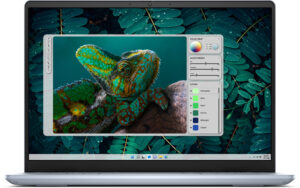
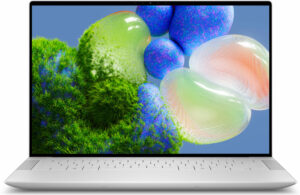
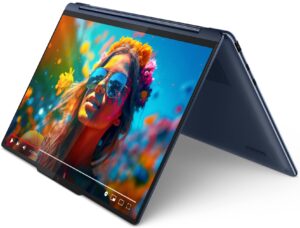
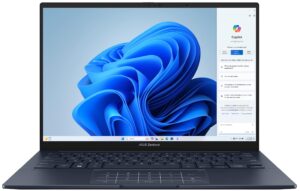
Disassembly, Upgrade options, and Maintenance
To gain access to the internals of this laptop, you have to undo six Torx-head screws. Use a lever tool to lift the zone behind the hinge that is close to the top corners. Open a slight gap and pry the side with a thin plastic tool. Do the same for the other side. Now, you can pry the front. Lift the rear and insert a thin plastic tool in between the place and the chassis. Slide the tool until the back is fully popped.
Here’s how the bottom panel looks on the inside.
This laptop has a 65Wh battery. To remove it, unplug the connector and undo the 2 Phillips-head screws that secure the unit in place. The capacity is enough for around 13 hours of video playback.
The RAM here is soldered. However, you can rely on up to 32 GB of LPDDR5x-7467 MHz memory that works in dual-channel mode. This amount of RAM should be enough for most people. There is just one M.2 slot for 2242 or 2280 Gen 4 SSDs. To take out the drive, undo the Phillips-head screw and unglue the small plastic holder.
The thermal system seems sufficient for this kind of notebook. It comprises two fans, a pair of heat pipes, two top-mounted heat sinks, and a single large heat spreader.
Verdict
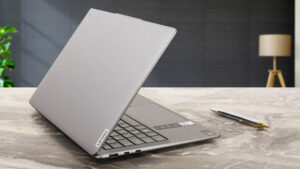 Thanks to its compact dimensions and snappy performance combined with a long battery life, the Lenovo Yoga Slim 7i (14″, Gen 9) could be a good choice for professionals who travel a lot. Now, the clocks of the optional Core Ultra 7 155H are decent, not impressively high. That has its positive side – the noise under full CPU load isn’t intrusive while the overall performance is still on point. At the same time, the comfortable keyboard doesn’t feel scorching hot to the touch.
Thanks to its compact dimensions and snappy performance combined with a long battery life, the Lenovo Yoga Slim 7i (14″, Gen 9) could be a good choice for professionals who travel a lot. Now, the clocks of the optional Core Ultra 7 155H are decent, not impressively high. That has its positive side – the noise under full CPU load isn’t intrusive while the overall performance is still on point. At the same time, the comfortable keyboard doesn’t feel scorching hot to the touch.
The 14-inch OLED display (LEN140WUXGA (LEN88AC)) is great! It covers fully the the DCI-P3 gamut, and it boasts a high max brightness of 388 nits in SDR mode alongside an infinite contrast ratio and good color coverage. The only con of the panel is the PWM usage.
Since that’s a small and light machine, the upgradability is limited – you change the SSD or the Wi-Fi card. If you want your device to be more future-proof, you can order it with 32GB of LPDDR5x RAM. The machine isn’t full ports but the available connectors are modern – two Thunderbolt 4 ports and an HDMI 2.1.
The Lenovo Yoga Slim 7i (14″, Gen 9) impresses with its compact dimensions, good build quality, color-accurate OLED display, and long battery life.
You can check the prices and configurations in our Specs System: https://laptopmedia.com/series/lenovo-yoga-slim-7i-14-gen-9/
Pros
- Solid aluminum build
- The fans aren’t intrusively noisy during full CPU loads in “Performance” mode
- 100% sRGB and DCI-P3 coverage (LEN88AC)
- High max brightness in SDR (388 nits) and HDR mode (627 nits) (LEN88AC)
- Infinite contrast ratio + 16:10 aspect ratio (LEN88AC)
- Good audio quality
- Type-C charging
- 1080p IR camera with an E-shutter
- Modern I/O with two Thunderbolt 4 ports
- The CPU can sustain good clocks and power limits under long 100% loads
- Comfortable backlit keyboard plus large and smooth touchpad
Cons
- Soldered memory and just one M.2 slot
- Lacks a fingerprint reader
- PWM usage (LEN88AC)
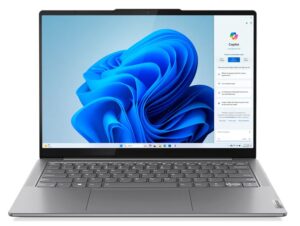
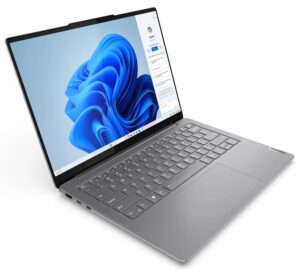
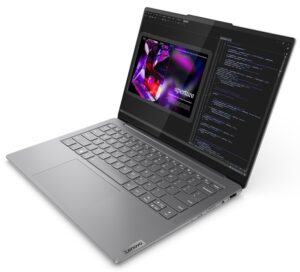

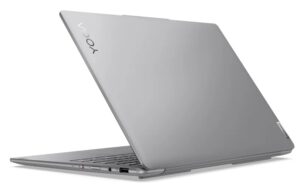





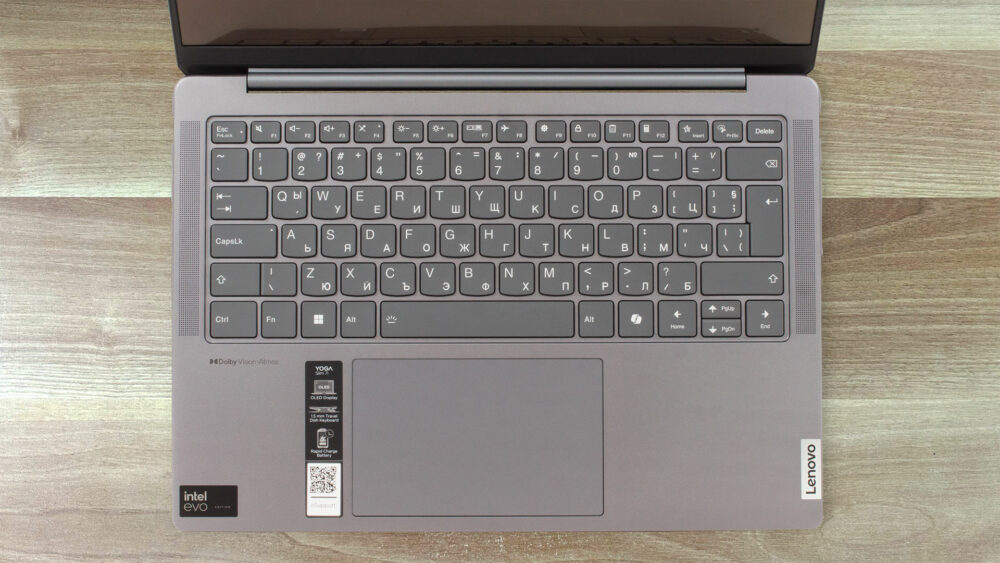

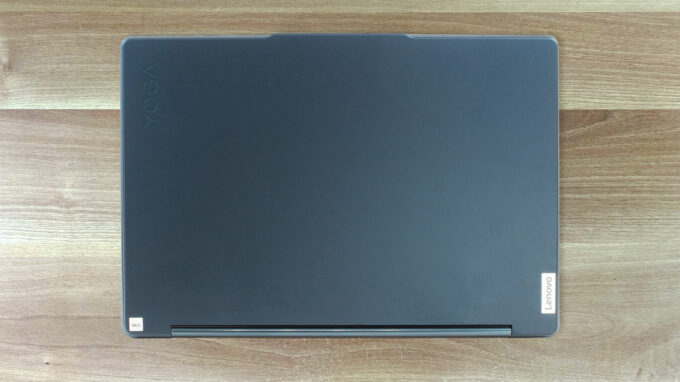




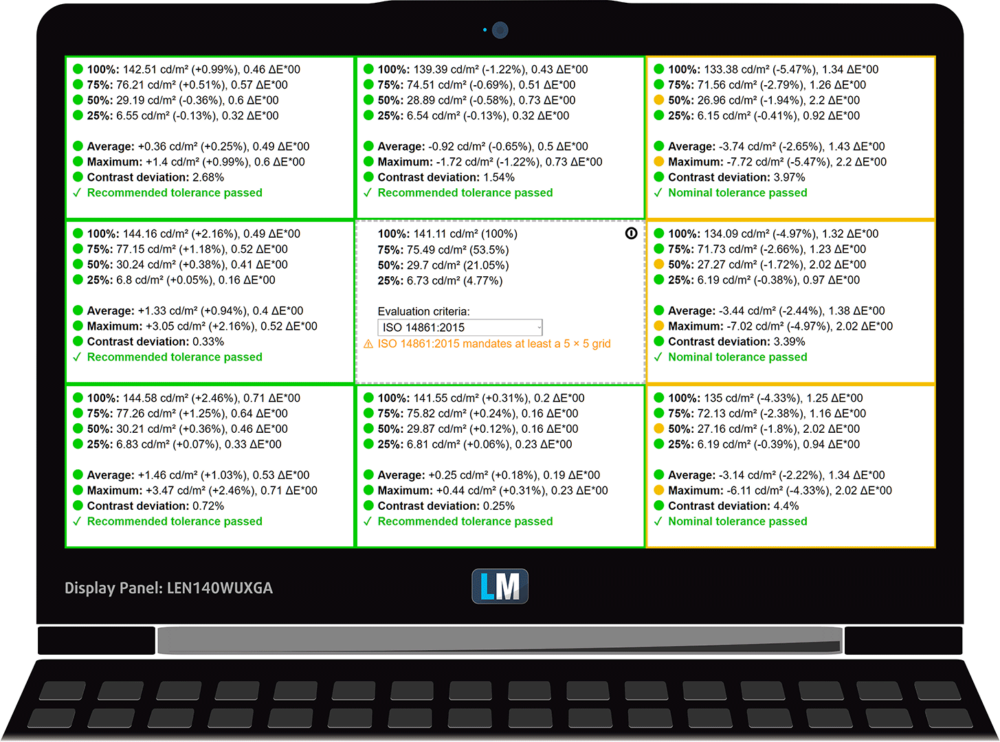


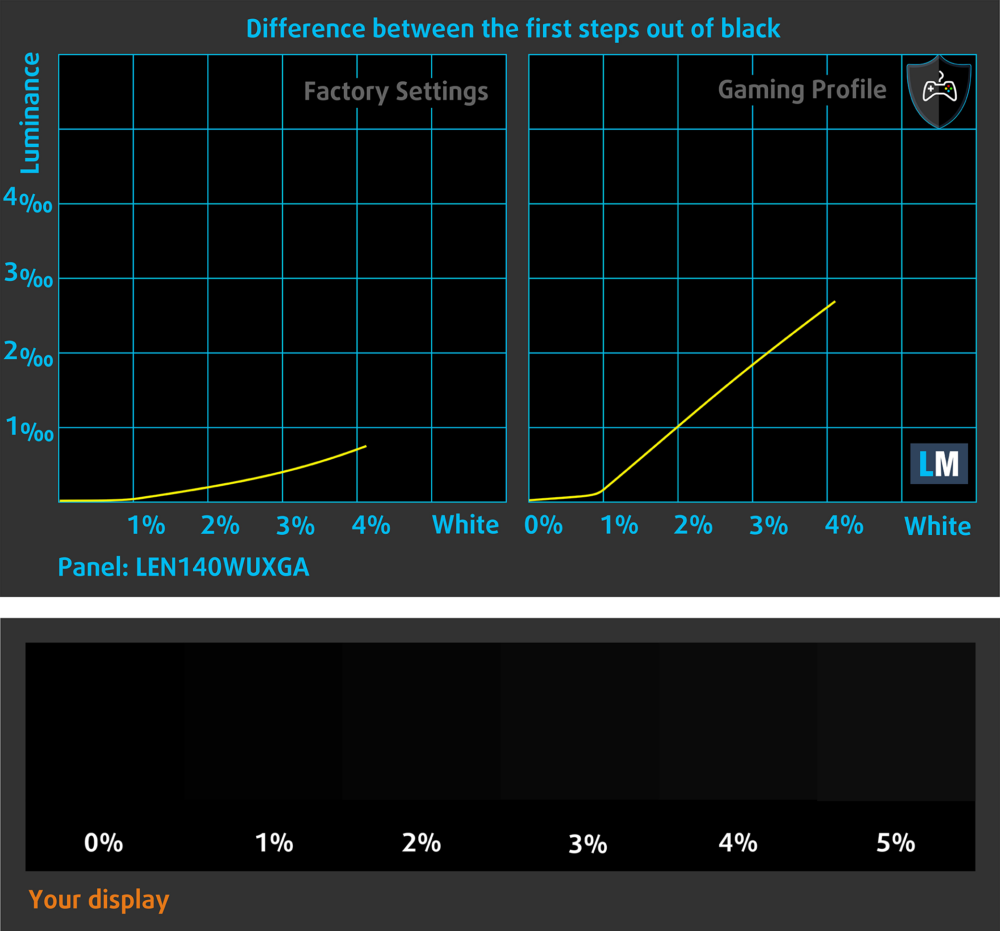

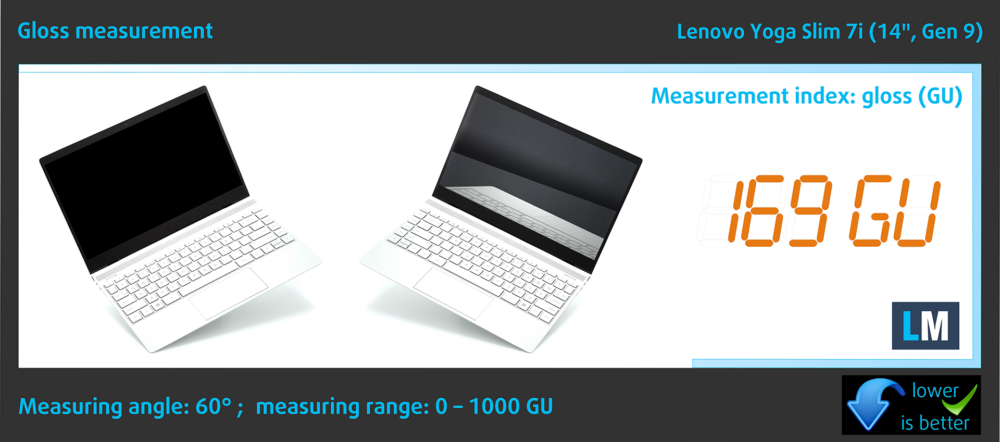
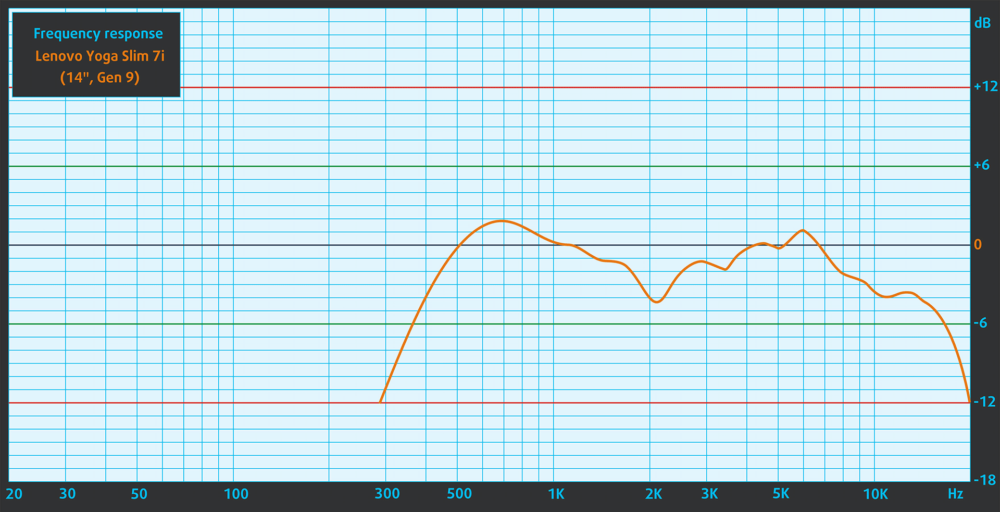



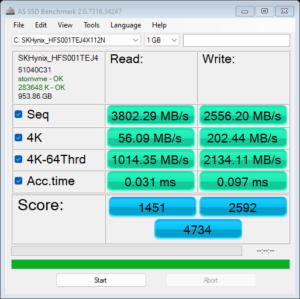



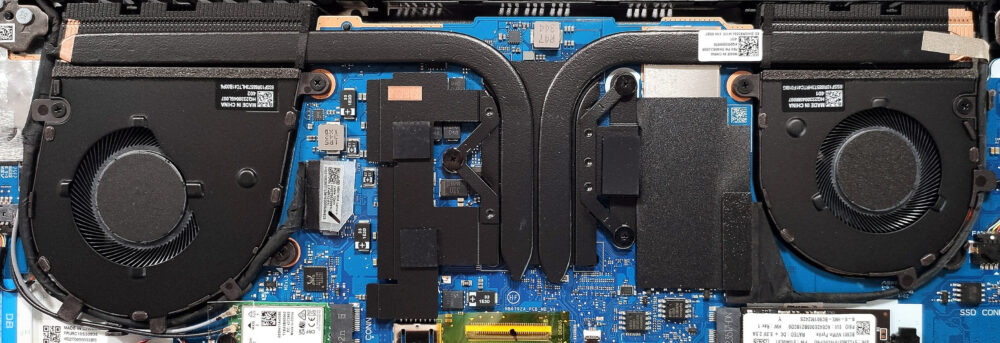
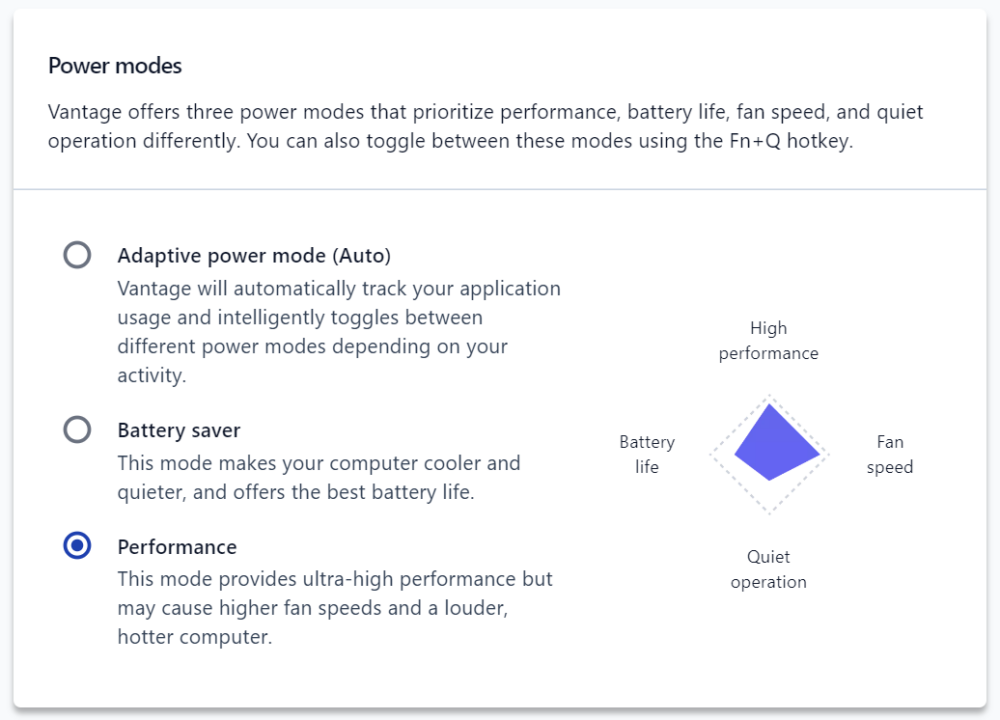





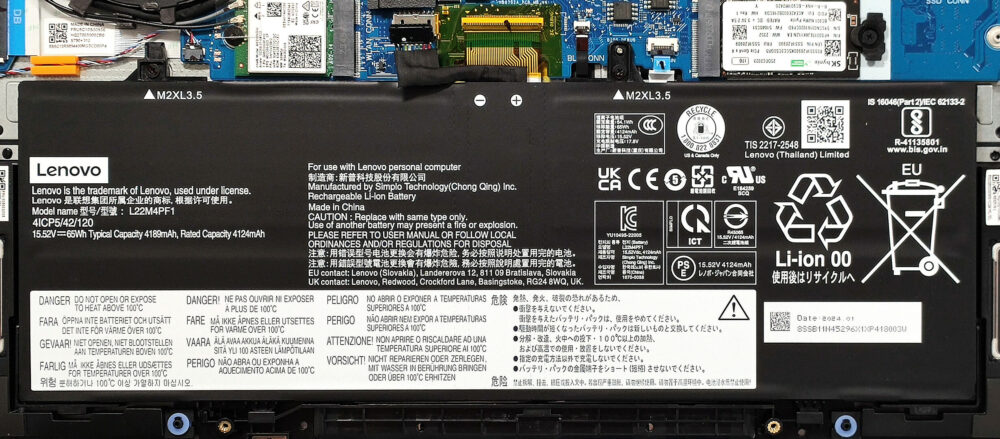









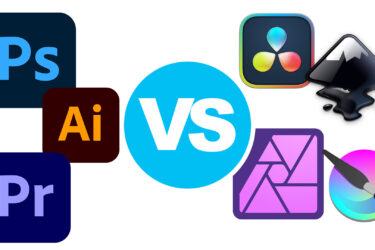

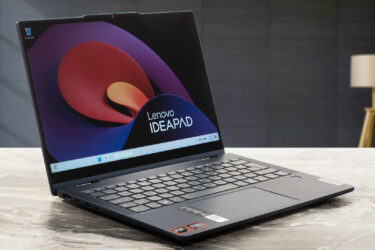
Hi – Thank you for the review!
Question: are you sure the touchpad is made of mylar? On the PSREF, it says clearly it is a glass touchpad. On my 7 Pro AMD (same chassis, similar features), I seems like glass to me, validating the specs! Link: Yoga_Slim_7_14IMH9_Spec.pdf (lenovo.com)